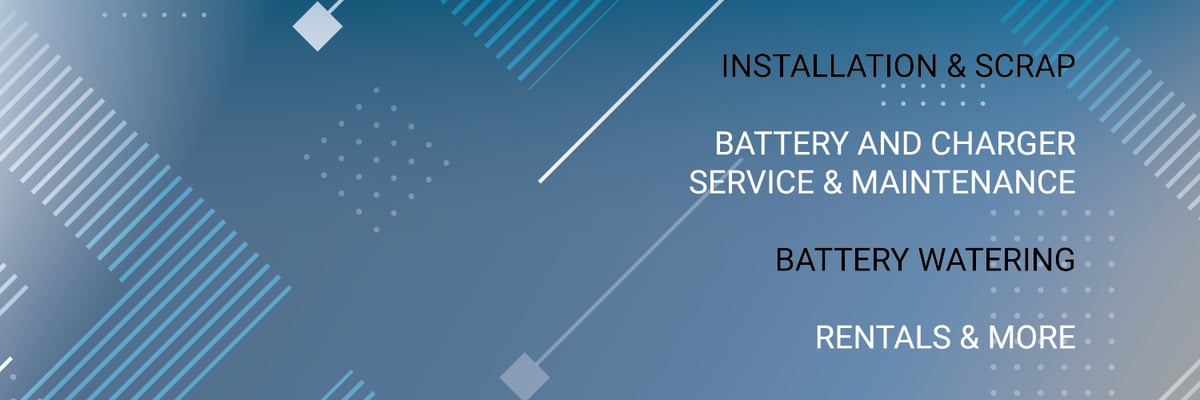
Optimizing Forklift Batteries Use in High Demand
Forklifts play a vital role in numerous industries, especially in warehouses and distribution centers. As the demand for material handling increases, so does the need for efficient and reliable forklift batteries. In this article, we’ll explore how to optimize forklift battery usage in high-demand situations, ensuring you get the most out of your equipment while maintaining safety and productivity.
Understanding Forklift Batteries: Types and Applications
Forklift batteries come in various types, each suited for specific applications. Understanding these can help you select the right battery for your operation and optimize its use.
Types of Forklift Batteries
- Description: The most common type of forklift battery, known for its affordability.
- Pros: Cost-effective, robust, and widely available.
- Cons: Requires regular maintenance and has a shorter lifespan compared to other types.
- Description: Gaining popularity due to their efficiency and longer life.
- Pros: Fast charging times, no maintenance required, longer service life.
- Cons: Higher initial cost.
- Description: Less common but still used in certain heavy-duty applications.
- Pros: Excellent performance at extreme temperatures.
- Cons: Environmental concerns due to cadmium content; memory effect can reduce capacity over time.
Choosing the Right Battery for Your Needs
When optimizing forklift batteries use in high demand, selecting the right type is crucial. Consider factors such as:
- The average daily usage of your forklifts
- The typical duration of each shift
- Environmental conditions (temperature fluctuations)
- Maintenance capabilities
For example, if you're operating in an environment where forklifts run continuously throughout multiple shifts, lithium-ion batteries may be worth the investment despite their higher upfront costs. They offer quick recharging capabilities that keep operations running smoothly without extended 36 volt flat plate forklift batteries downtime.
Optimizing Forklift Batteries Use in High Demand
Once you've chosen the appropriate type of forklift battery for your operations, it's essential to implement strategies that maximize their efficiency and longevity.

Implementing a Charging Schedule
Charging practices significantly affect battery performance and lifespan. Here are some tips:
- Establish a routine charging schedule based on usage patterns.
- Monitor discharge levels carefully—never let lead-acid batteries drop below 20%.
- Overcharging can lead to overheating and reduced battery life.
- Invest in smart chargers that automatically adjust voltage based on charge levels.
- Ensure charging stations are easily accessible to minimize downtime during shift changes.
- Implement designated areas free from distractions or hazards.
- With lithium-ion batteries, consider opportunity charging during breaks or downtime to minimize energy loss.
Maintenance Practices to Extend Battery Life
Proper maintenance is key when optimizing forklift batteries use in high demand. Regular checks can prevent costly breakdowns:
- Corroded terminals can impede power transfer; clean them with a baking soda solution as needed.
- Check water levels regularly; low water can damage plates leading to reduced capacity.
- Store batteries at recommended temperatures (typically between 60°F and 80°F) to maintain efficiency.
- Implement a rotation system where older batteries are cycled back into service periodically; this helps balance wear across all units.
- Train operators on proper usage techniques—incorrect handling can lead to premature wear and tear on your batteries.
| Maintenance Task | Frequency | Importance | |---------------------------------------|-----------------------|---------------------------| | Terminal Cleaning | Monthly | Prevents corrosion | | Water Level Checks | Weekly | Maintains performance | | Temperature Monitoring | Daily | Ensures optimal conditions | | Operator Training | Annually | Reduces misuse |
By following these practices diligently, you can ensure that your fleet of forklifts operates effectively even under high-demand circumstances while prolonging battery life significantly.
FAQs About Optimizing Forklift Batteries Use
1. What’s the average lifespan of forklift batteries?
The lifespan varies by type; lead-acid typically lasts about 5 years, while lithium-ion can last up to 10 years with proper maintenance.
2. How often should I charge my forklift batteries?
It depends on usage patterns; however, it's generally advisable not to let lead-acid batteries discharge below 20%.
3. Can I mix different types of forklift batteries?
It's not advisable as different chemistries have varying charging requirements which could lead to inefficiencies or damage.
4. What are signs that my forklift battery needs replacement?
Diminished runtime, unusually long charging times, or visible swelling are indicators that it may be time for a replacement.
5. Is opportunity charging safe for all battery types?
Opportunity charging is primarily beneficial for lithium-ion batteries; lead-acid should follow traditional charging schedules unless specifically designed otherwise.
6. How do temperature extremes affect forklift battery performance?
Extreme temperatures can reduce efficiency; too cold may slow chemical reactions within the battery while excessive heat can accelerate degradation processes.
Conclusion
In today's fast-paced industrial environments where demand is constantly fluctuating, optimizing forklift batteries use becomes imperative for operational success and cost-effectiveness. By understanding different types of forklift batteries available on the market and forklift batteries implementing best practices around their usage—from choosing appropriate models through diligent maintenance—you’ll ensure that your equipment is always ready when you need it most.
Whether you're looking into advanced lithium-ion options or sticking with tried-and-tested lead-acid models, making informed decisions will pave the way toward smoother operations even under pressure! So why wait? Start optimizing today!
